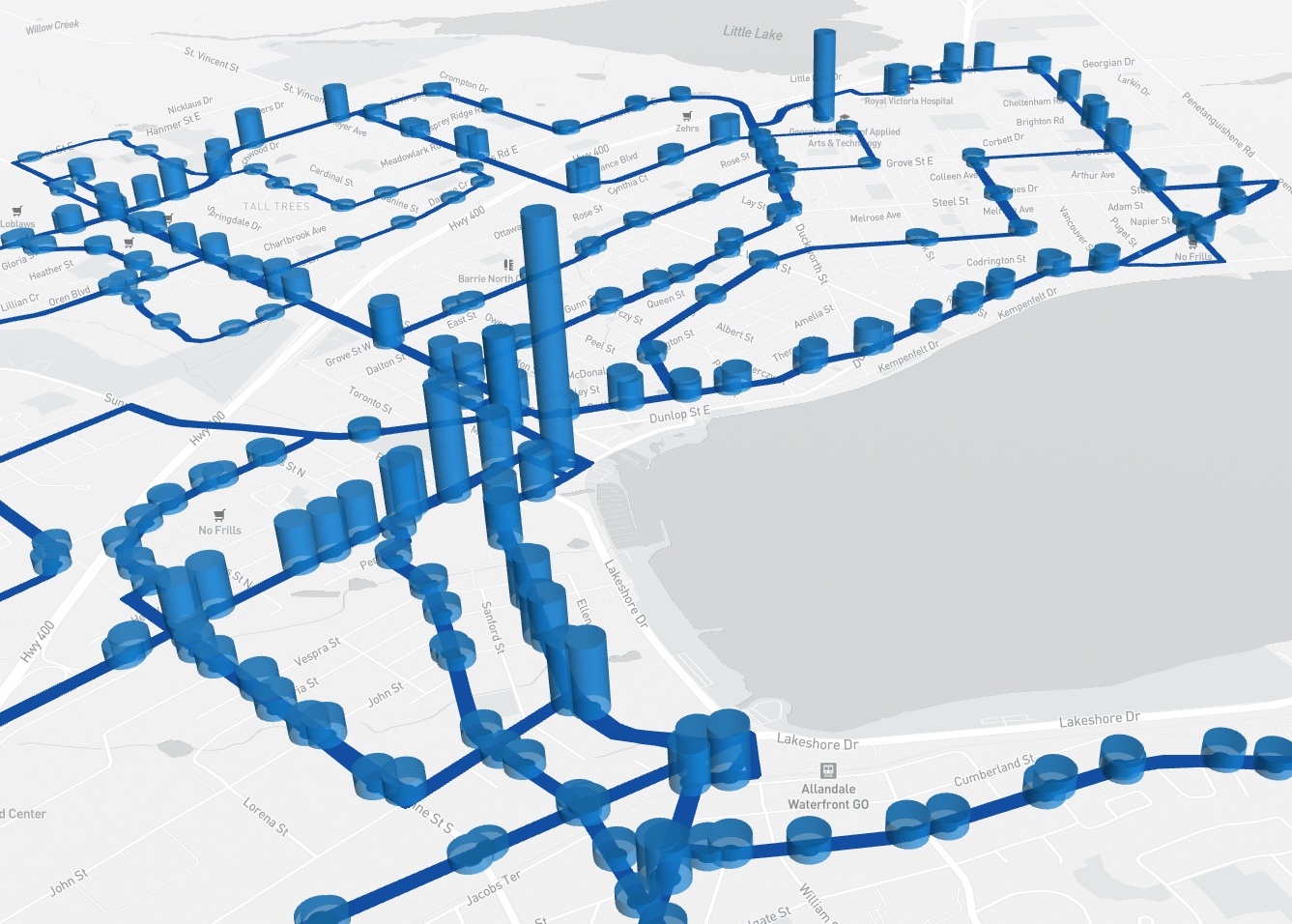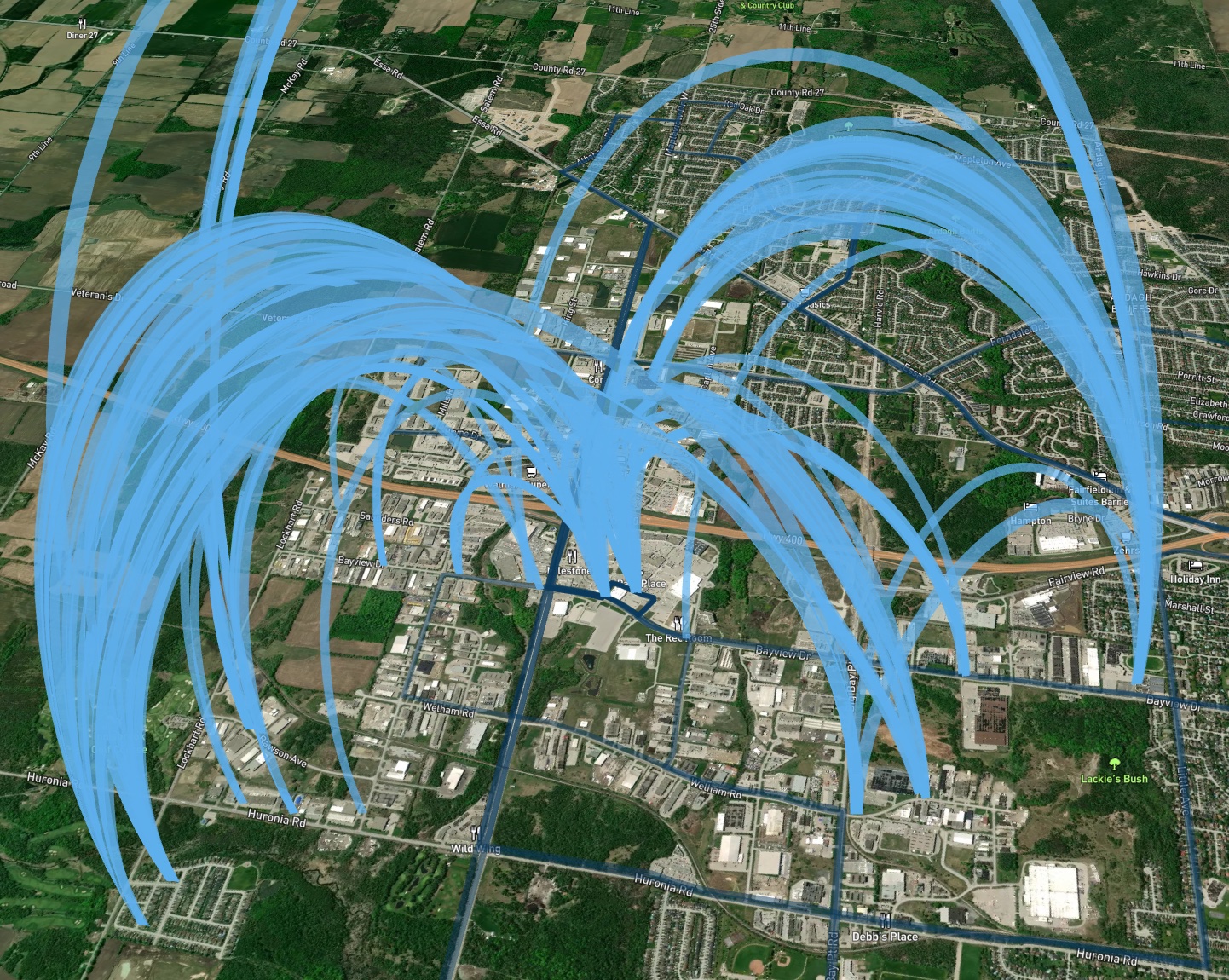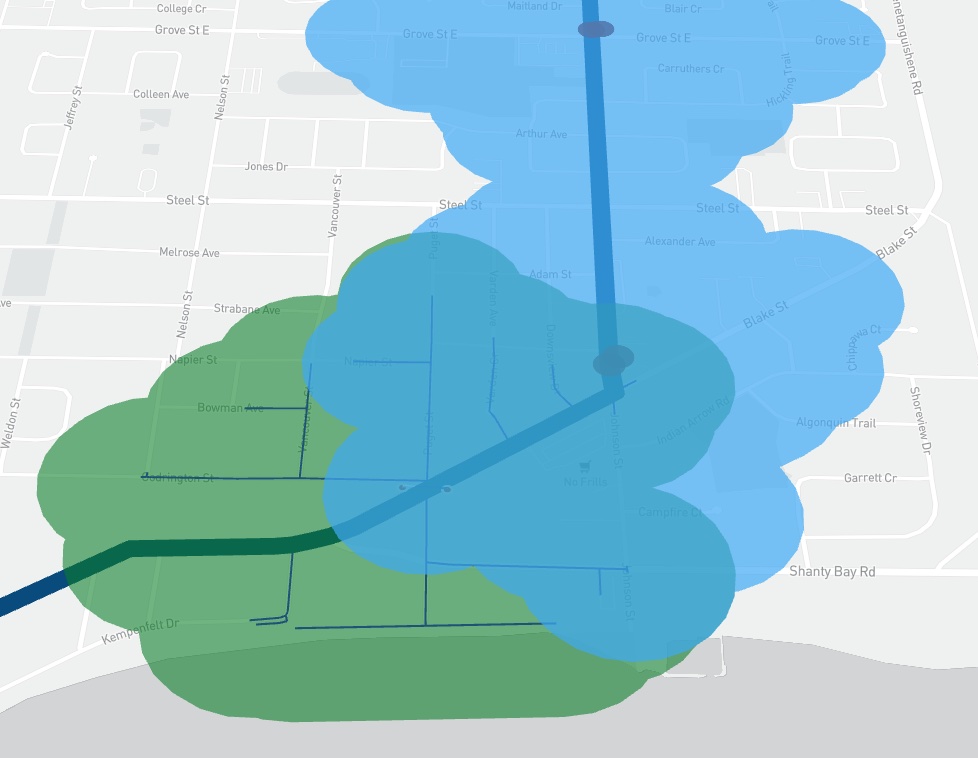One of the fastest growing cities in Canada, the City of Barrie, Ontario is planning for a denser downtown core, new developments along its boundaries, a new transit terminal, and frequent all-day GO Transit rail service.
Barrie is roughly one hour’s drive north of Toronto with a population approaching 150,000 people and a fleet of 50 buses. To accommodate this growth, Barrie is working on a Transit Vision that will guide changes to their bus network.
The Challenge
Mike McConnell is the Transit Projects Lead at Barrie Transit. Leading what will be a transformative multi-year project with a limited budget, Mike sought to perform as much of the technical work in-house as was possible.
Historically, every route’s ridership and runtime data were analyzed in Excel. This was a time-consuming process, and as such, route reviews were conducted on an annual basis. Changes to transit coverage, such as moving a stop, were also analyzed in ArcGIS. Impacts of changes to access, such as the number of jobs that can be accessed in a half-hour trip, were not analyzed.
It became clear that modelling the impacts of multiple network design scenarios and subsequently monitoring the performance of the network as it evolved, would require an entirely new tool.
Choosing Transify
Transify has been in-use at Barrie Transit for over a year and has made their APC, CAD/AVL, On-Demand, and census data ready to visualize within seconds. Each of these data sources has been fully integrated with Transify, making manual data extractions and uploads a relic of the past.
Designing a New Network
One of Mike’s objectives was that the tool would visualize detailed ridership patterns, which is crucial to understanding how Barrie Transit’s customers travel.
Insights gained from Transify-generated charts and maps are being used to draft more direct routes between popular destinations and to identify which areas could be better served with on-demand service.


Optimizing the Existing Network
In addition to helping the team perform the technical work of designing a network in-house, Mike sought a tool that would save him and his team time on short-term planning and route reviews.
For instance, stops are being moved as to balance the spacing between them and to support more direct routes. Both goals are part of Barrie’s Transit Vision, but as moving stops is a gradual process, impacts in transit coverage to residents, jobs, and equity-deserving groups are measured in Transify prior to making each stop or routing change.

Figure 3: 5-Minute Walk to Transit with a new stop pair.
Transify is being used to conduct route reviews, which optimize scheduled trip times in response to changing ridership and traffic conditions.
“Transify speeds up our route reviews. When college students come back in September, we’ll be on Transify monitoring transit performance.”
- Mike McConnell, Transit Projects Lead at Barrie Transit.
Setting runtimes is the most time-consuming part of Barrie Transit’s route review process, due to the large amounts of data that need to be processed in Excel. The goal is to ensure that all trips can stay on schedule. However, being too generous with the schedule results in buses excessively holding at timepoints, unnecessarily delaying customers onboard.
“Sometimes you just have to ride the bus to determine if there’s too much or too little time in the schedule. Using Transify is almost like taking hundreds of bus trips at once because the charts are so detailed. Our scheduling process uses the 80th percentile of trip times. Afterwards, with Transify we’ve found segments where a few minutes can be reliably saved, especially in the evenings.”
- Mike McConnell, Transit Projects Lead at Barrie Transit.

Lastly, Transify has been used on the operations side to investigate customer comments. It now takes just a few minutes to determine whether an early or late trip is a regular occurrence, and pass that on to a route supervisor. Thanks to the time savings in analyzing trips, Mike and his team can review all trips on a regular basis, to address punctuality issues proactively instead of reactively.
Barrie Transit is successfully using Transify to support their day-to-day and long-range service optimization and network planning needs.
Looking to brainstorm how Transify could support your team? Book an Intro Call to get started on our Free Tier.
